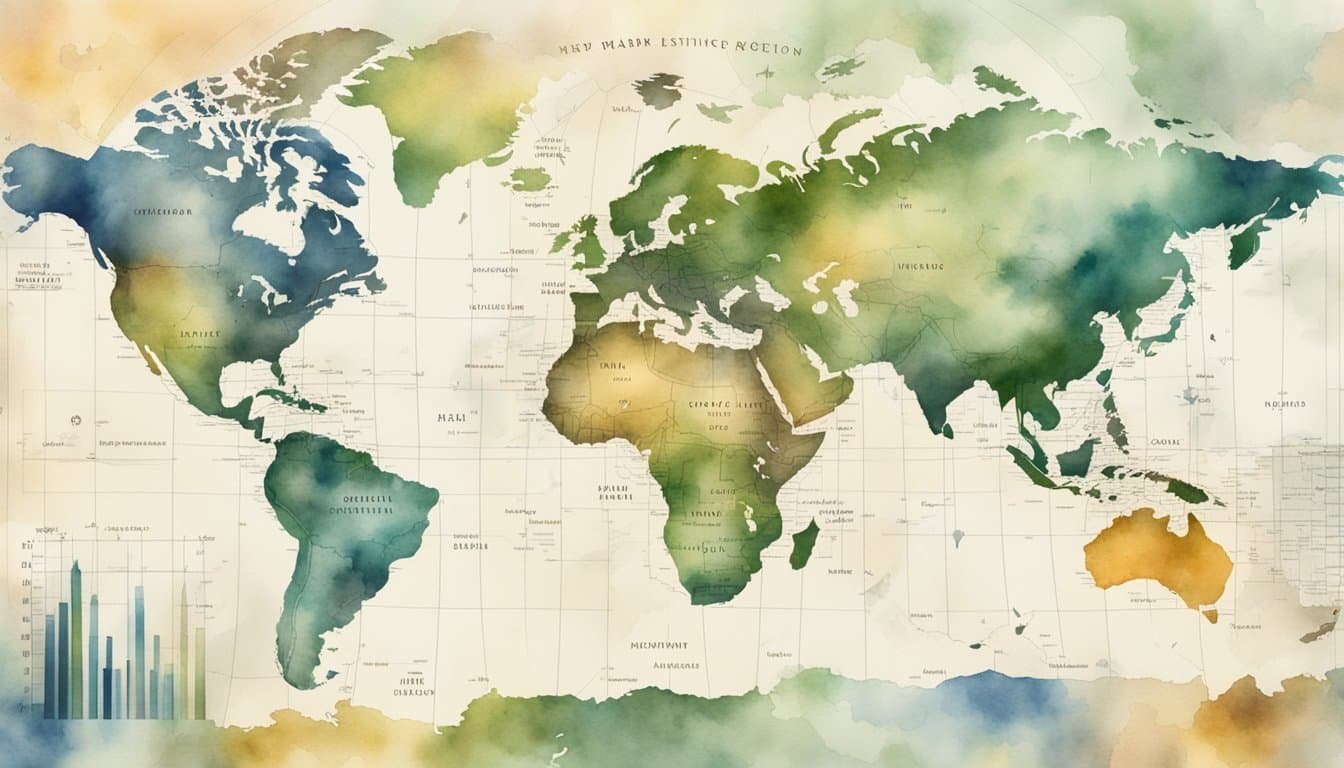Global Tree Count
Discovering the plethora of trees planet Earth harbors is a fascinating journey through nature’s lush architecture. From the dense canopies of tropical forests to the solitary giants in arid deserts, every tree plays a pivotal role in the global ecosystem and the sustenance of human civilization.
Estimating Tree Populations
Efforts to quantify the number of trees on Earth have yielded surprising results. A groundbreaking study delved into 421,529 measurements from all over the globe, across six continents. This extensive research, using a combination of ground-based surveys and satellite images, provides a clear visualization of tree populations at a global scale. One notable finding from this research suggested a revision in the global tree density, taking the ratio from previously thought 61 trees per person to an astonishing 422 trees per person. Interested in the intricate methods of measuring tree cover? Dive into this deep-rooted topic through the study “Mapping tree density at a global scale”.
Geographic Distribution
The geographic spread of trees varies immensely, from the boreal forests of the north to the lush Amazon rainforest. Trees populate every biome and adapt to an array of climates. Yet, certain arid zones, such as the West African Sahara and Sahel, were underestimated in tree counts; recent findings show that these drylands hold more trees than once assumed. To explore these areas where trees defy the odds, you can read about it in the paper An unexpectedly large count of trees in the West African Sahara and Sahel. Not to be overlooked, the global count estimates that Earth is home to around three trillion trees, a figure that underscores the lushness of our planet yet also highlights the delicate balance of ecosystems that face threats from deforestation and climate change.
Threats and Conservation

The health and numbers of trees worldwide are at a crossroads due to deforestation and conservation efforts. While human activity can hinder the growth and survival of these vital natural resources, there are also significant endeavors to reverse damage and protect forested areas.
Impact of Deforestation
Trees are felled at an alarming rate to make way for agriculture and urbanization, particularly in regions like Brazil’s rainforests and the boreal forests of Canada and Scandinavia. Deforestation not only reduces the number of trees but also has a wider impact on ecosystems, often leading to loss of biodiversity. Tropical regions near the equator, which hold some of the most diverse ecosystems such as the Amazon, face intense pressure as land is cleared for farming.
- China and the United States are among the global economic powers contributing to this trend, as demand for timber and agricultural products drives deforestation.
- In parts of Europe, however, rigorous environmental policies have helped reduce the rate of tree loss.
Scientists have been utilizing satellite imagery to monitor these changes globally, revealing both the scale of deforestation and areas in dire need of conservation.
Reforestation Efforts
Conversely, reforestation initiatives are burgeoning across the globe. Organizations and governments are recognizing the critical role that trees play in protecting the environment. From the United States to Australia, reforestation projects aim to:
- Restore ecosystems damaged by human activity.
- Mitigate climate change by enhancing the carbon-capturing capacity of forests.
Several regions, including parts of South America and Scandinavia, are witnessing a push towards planting native species to promote ecological balance. Open access to scholarly articles allows the public and decision-makers to better understand the significance of reforestation, with research published under the Creative Commons BY license detailing the importance of conserving endangered tree species. This shared knowledge is a powerful tool for scientists and the general public, facilitating informed action in tree conservation efforts.
Scientific Research and Data

Diving into the numbers, science reveals a complex story about our planet’s green giants. From high-tech tools to meticulous measurements, researchers work tirelessly to tally every trunk.
Studies by Thomas Crowther and Teams
Thomas Crowther, a leading ecologist, and his teams have made pioneering efforts in mapping the world’s tree population. They used a combination of satellite imagery, machine learning, and on-the-ground measurements to estimate that the Earth is home to approximately three trillion trees. Their study demonstrated that there are far more trees in the world than was previously thought, and it was recognized for its use of comprehensive data on a global scale.
Data Collection and Analysis
To accurately count the world’s trees, researchers draw on 421,529 measurements from forest plots across the globe, including locations like Scandinavia and North America. Teams rely on cutting-edge computer algorithms to analyze satellite images, ensuring a thorough visualisation of tree coverage. The Crowther Lab’s work, facilitated by robust computational models, offers open access to their findings under a Creative Commons BY license, promoting transparency. Code used in these studies is often made available for third-party authors to verify results or extend the research, showcasing the collaborative spirit of the scientific community.

